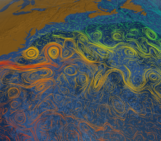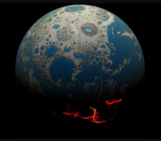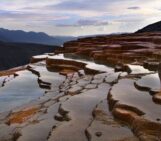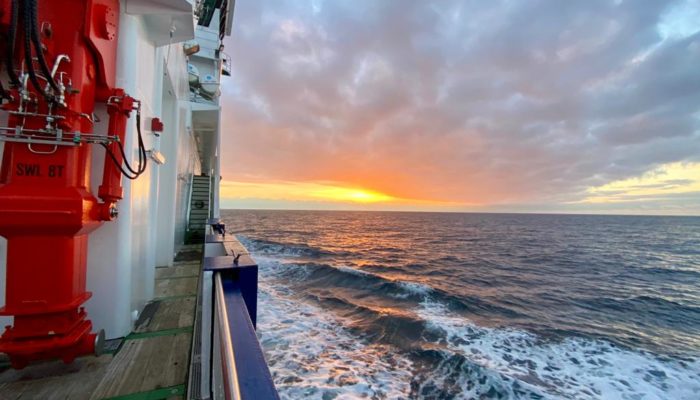
“Every ship that navigates the high seas, with these charts and blank abstract logs on board, may henceforth be regarded as a floating observatory, a temple of science.”
Matthew Fontaine Maury
This is a joint post, published together with the climate sciences division blog and the ocean sciences division blog.
The ocean has always been important for humanity, with trade and war being just two examples of critical motivations for marine travel throughout the course of history. We might also add exploration, as in the 19th century curiosity about the vast expanses of the world’s oceans sparked enthusiasm for large-scale voyages for the investigation of the sea. In the geosciences, the inherent necessity of fieldwork has built on the legacy of those curious explorers. At the hands of their modern successors — the archaeologists, the marine biologists, the oceanographers — the voyage of discovery has evolved considerably into the research cruise, a resource which is fundamental to the success of much of the cross-disciplinary science pursued nowadays. Gathering marine data from different latitudes is often a collaborative undertaking that involves the use of modern vessels designed for research at sea. Several countries participate in this kind of expensive activity and, among them, Germany is in an outstanding position with a relatively large research vessel fleet.
It is fair to say that the best-known German research vessel is probably the icebreaker Polarstern, which has recently completed the notorious one-year-long MOSAiC expedition in the Arctic. Equally exciting but less extreme and remote was my sailing from Emden (Germany) to Las Palmas (Canary Islands, Spain) on board RV Maria S Merian during cruise MSM104/1 (SIPA: Sinking particles, their production, transfer and transformation) in November 2021. Indeed, after a pause in fieldwork activities due to the COVID-19 pandemic, I had the privilege of setting off on my first research cruise. RV Maria S Merian, the ship used for our venture, is a state-of-the-art research vessel that sails under the flag of Germany and serves the marine scientific community on long and short routes around the world. At full capacity she is able to carry 20-odd scientists and crew members, as well as an intricate array of scientific technology and instruments for marine research. During my trip, I could not stop thinking about how fortunate we researchers were to work with a seasoned crew in a vessel that is fitted with ample laboratory spaces. The experience was unique and allowed me to trace parallels with ancient scientific voyages that have always been an interest of mine. I have studied these expeditions for years, not least for my doctoral research at Oxford.
The voyage of the Challenger (1873), which is often regarded as the birth of oceanography as a discipline, marked the beginning of the so-called era of exploration in this field, which lasted for the next 40 years (1873-1914). A small warship converted for scientific purposes, the Challenger did not provide the greatest comfort for its almost 300 occupants. Space was limited, living quarters were cramped, and the explorers did not have the luxury of heating or air conditioning systems which help to make life at sea bearable today. Things were not much better in the food department either, and accounts of the trip describe a repetitive menu consisting of such delicacies as hard biscuit, salt pork and pea soup. If these challenges were not enough, health problems onboard were common, with dysentery prevalent among them. With communication having to be done via letters that required considerable amounts of time to reach their destination, I still wonder how the scientists could patiently keep their excitement for sharing their adventures and discoveries to themselves. The ship’s captain made use of a suite of celestial methods (e.g., using apparatus such as sextants, astrolabes and quadrants) for navigation, and the science, which may seem rudimentary by present day standards, was ingenious for the time. For example, researchers used to apply a weight tied to a rope for the mechanical sounding measurements that provided information about the bottom of the ocean. It worked like this: by throwing a weight attached to a rope overboard and measuring the length of the rope when the weight reached the bottom, one could calculate the ocean depth in a given location. Both the living conditions and the science have changed considerably and, more than 150 years later, the reality I encountered during my expedition was completely different.
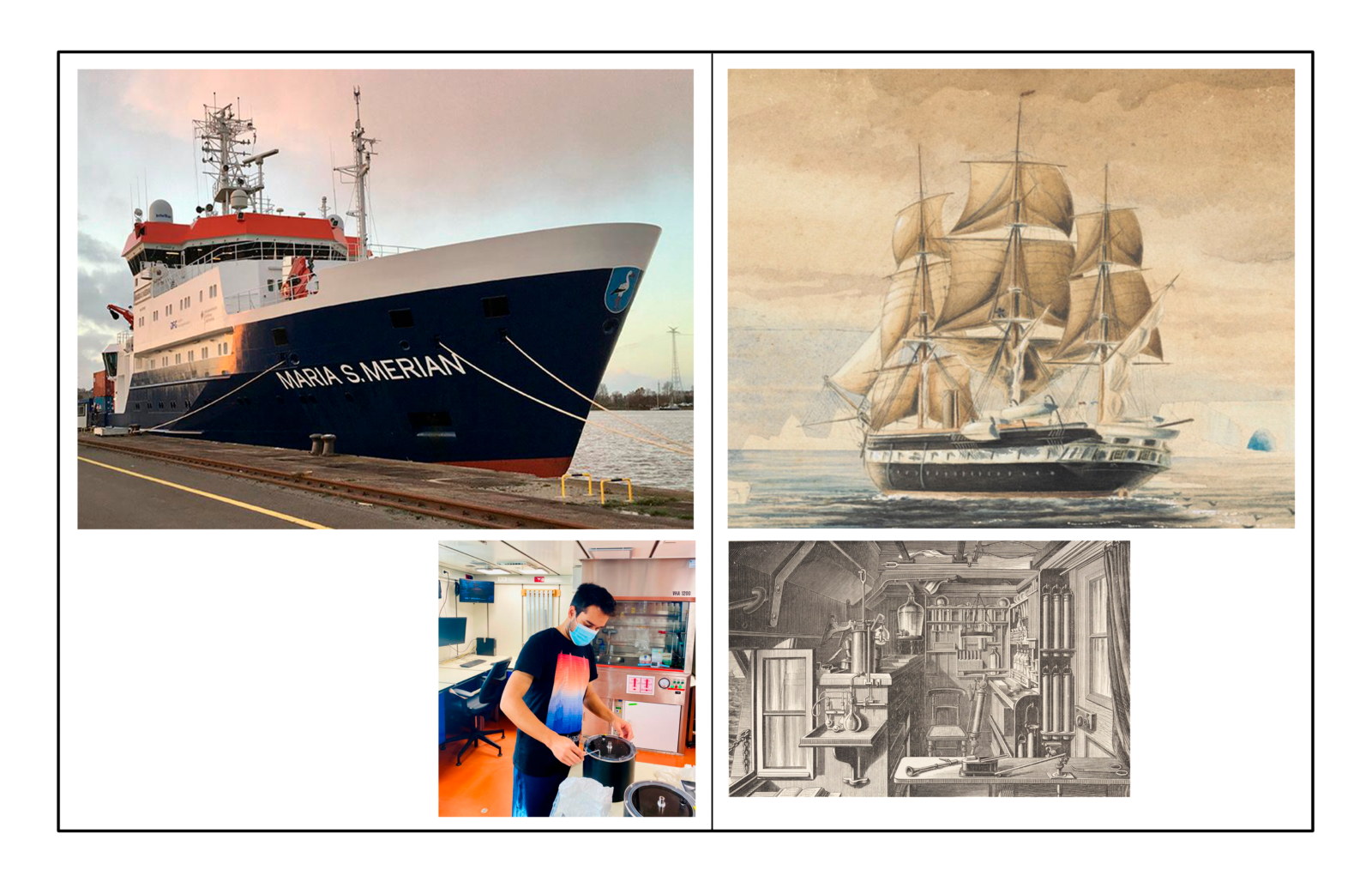
Now and then: RV Maria S Merian during cruise MSM104/1 (2021) (Credit: Daan Eldering) and the HMS Challenger during the Challenger Expedition (1872-1876) (watercolor on paper by Herbert Swire), a warship converted for scientific purposes, with examples of their respective laboratory spaces (Credit: Thomas Henry Tizard; Aman Mundanatt)
With a similar aim of obtaining data on various aspects of marine sciences (e.g., formation and alteration processes of particulate and dissolved organic matter), my cruise was much shorter and considerably smoother than the Challenger Expedition (1872-1876). RV Maria S Merian offers plenty of cabin space to its occupants as well as laboratory space and cooling and freezing rooms for the immediate processing/storage of samples that will be analyzed onshore. The commodities of the modern era meant that during cruise MSM104/1 researchers and crew ate a highly nutritious, diverse and balanced diet. In fact, the well-being of the cruise participants was a priority and the vessel was equipped with leisure facilities such as a gym that allowed me to do my regular exercise, far away from solid ground. Although a hospital equipped to treat various ailments and injuries was available, thankfully in my one-month long journey the onboard medical doctor only had to respond to ordinary sea sickness cases. Satellite internet connection allowed scientific experiments/results to be communicated in real time and regular exchanges with researchers on shore could be scheduled. While in the past illustrators would draw and describe newly discovered species, and cameras were not as common, today our depictions of the natural world can be achieved by taking photos on our phones — a quick, practical, accurate and easy-to-share way both to document science and to send souvenirs to family, friends and colleagues while at sea. Thanks to advances in navigation technology, voyages are now much safer and the capabilities of these floating labs are ever-increasing. For example, RV Maria S Merian is equipped with modern radar navigation systems and an echosounder that uses acoustic waves for bathymetric studies. The ocean depth is now measured by the time taken by a pulse of sound to reach the bottom of the ocean and reflect back to the vessel.
In the 19th century, expeditions were costly, being funded by the governments of prominent countries. This has not changed in as much as the costs of operation of research vessels are still high and expeditions must be planned well in advance. However, although developing countries are at a disadvantage when it comes to the availability of scientific assets such as research vessels, I was pleased to be able to work with an international team during MSM104/1. It was collaborative science at its best, showing that unlike what happened in the past, with nations launching their individual expeditions to survey the expanses of the ocean, we have more international research cooperation nowadays (see e.g., the IODP program). Apart from the scientific data that result from these expeditions, science communication and outreach are other ways of giving back to society. For this purpose, during cruise MSM104/1, the research teams maintained two different blogs at the University of Bremen and the Royal Netherlands Institute of Sea Research to report on the progress of the cruise and the daily life of researchers at sea. This could be seen as a modern analogue of the ancient onboard diaries once written during this type of expedition. Moreover, after the cruise, a report was produced, pretty much like the set of publications derived from e.g., the Challenger Expedition.

Now and then: The crews of MSM104/1 (2021) (Credit: Karin Zonneveld) and the Challenger Expeditions (Credit: reproduced from original documents in the library holdings of Dartmouth College, Hanover, New Hampshire, USA. Copyright © 2003 by Dr. David C. Bossard)
Ongoing technological advance means that the future fleet of research vessels will be even more sophisticated than the one in service today. The reliance of marine sciences on ships will indeed continue and new channels of research will be developed using cutting-edge technology. RV Maria S Merian is a beautiful vessel which, like its namesake the naturalist Maria Sybilla Merian, contributes to the progress of scientific research in the natural world. Until I am reunited with this vessel, I keep the following words in mind, which I think summarize the relationship between humans and the oceans, beautifully mediated by research vessels:
“Eventually man, too, found his way back to the sea. Standing on its shores, he must have looked out upon with wonder and curiosity, compounded with an unconscious recognition of his lineage. He could not physically re-enter the ocean as the seals and whales had done. But over the centuries, with all the skill and ingenuity and reasoning powers of his mind, he has sought to explore and investigate even its most remote parts, so that he might re-enter it mentally and imaginatively.”
Rachel Carson, The Sea Around Us (1951)
Edited by Ichiko Sugiyama and Meriel J. Bittner
Further reading:
-
The missions of H.M.S. Challenger and JOIDES Resolution – a comparison of ocean exploration then and now by Laura Guertin
- Cruise Report of Maria S. Merian104 Sinking particles, their production, transfer and preservation

